The fruit of the month for the January Can It Up! challenge is citrus. I love citrus fruits! They taste so clean and fresh.
This Lemon Jelly reminds me of golden sunshine. It was cloudy and cold the day I made it, and when I walked into the kitchen, it smelled like the fresh scent of sunshine. I know sunshine doesn’t have a scent, but lemon is one that I associate with it. So I named my jelly Lemon Sunshine in a Jar.
It has an interesting flavor. It tastes like lemon marmalade without the rinds. It’s a little citrusy and a little sweet, but at the same time, a little bit bitter like marmalade. It takes a little getting used to, but I like it. It reminds me of summer and during the cold months of winter, we can all use a little pick me up.
I have a lime tree that has a lot of tiny buds, but no blooms yet. I would’ve loved to have used some of the limes for this challenge, but they’re not ready yet. I’m looking forward to canning something with all of those limes, but it will be a couple of months.
I also have a lemon tree, but it hasn’t figured out that it’s supposed produce lemons. So for this challenge, I had to use lemons from the farmer’s market.
Lemon Sunshine in a Jar
Makes: About Four 1/2 Pint Jars
Adapted From: The Joy Of: Jams, Jellies, and other Sweet Preserves by Linda Ziedrich
Ingredients:
- 1 pound of lemons (I used 3 large lemons) *
- 7 cups water
- About 3 1/2 – 4 1/2 cups sugar (depends on how much liquid you have after the jelly drips in the jelly bag)
* You can substitute limes for the lemons in this recipe
Directions:
1) Wash the lemons
My lemons were not organic so I poured boiling water over them and scrubbed them really well before slicing them. If you use organic or home-picked lemons that aren’t covered in pesticide, you can skip this step.
2) Slice the lemons
Slice the lemons into thin slices – about 1/8 – 1/4-inch thick. Put the slices into a non-reactive pot and cover them with water. I used non-chlorinated water.
3) Soak the lemons overnight
Cover the pot with a kitchen towel and let the lemons soak in the water for 24 hours at room temperature to bring out the flavor of the lemons.
While the lemons were soaking, the aroma was delightful and brightened things up. The kitchen smelled like sunshine.
4) Cook the lemons
Bring the sliced lemons and water to a boil over medium-high heat. Reduce the heat and let the mixture simmer for 40 minutes.
5) Let the jelly drip
Get out a container and rest your chinois inside. Line the chinois with damp cheese cloth. Pour the lemon mixture into the chinois and use your wooden tool or the back of a spatula to press all the juice out of the mixture.
Or if you prefer, pour the cooked mixture into a damp jelly bag over a pot or bowl. Let the liquid drip for several hours.
6) Measure the liquid
I ended up with about 3 1/2 cups, you might end up with more. Pour the liquid into the preserving pan. If you end up with more liquid, you should do this step in two parts. Since I only had 3 1/2 cups, I did it in one step. I added 3 1/4 cups of sugar and stirred the mixture over medium heat until all of the sugar had dissolved. Then I raised the temperature to medium-high heat.
7) Boil the mixture
Boil the mixture until it reaches 221 degrees F. on a jelly thermometer. Once you reach 221, shut the fire and let it rest for 5 minutes. After 5 minutes, turn the fire back up to reach 221 degrees. This little rest ensures a good gel.
8) Ladle the jelly into jars
Ladle the jelly into hot, sterilized half-pint canning jars. Release the trapped air using a Bubble Remover and Headspace Tool. Then add the lids and rings, and process the jars in a boiling-water bath for 10 minutes. For more information on water-bath canning, refer to the National Center for Home Preservation web site.
9) Let jars rest on counter overnight
Turn the heat off. Remove canner lid. Wait 5 minutes, then remove the jars, and let them sit on the counter for 24 hours to cool and ensure they are sealed correctly. You should hear the lids pop if they are sealed properly.
10) Store jars in a cool, dry place.
Place the sealed jars in a cool, dry place for storage for up to a year. If any of the jars do not seal properly, place them in the refrigerator. They will last for a couple of months in the refrigerator.
Thanks to Hima of All Four Burners for hosting the Challenge. It’s time to Can It Up!
Happy Canning!
Cathy
Here are some of the other citrus jams I’ve made over the past several years:
- Orange Marmalade
- Grapefruit Marmalade
- Festive Marmalade
- Christmas Marmalade
- Citrus Marmalade
- Lime Marmalade
Canning resources:
- Ball Complete Book of Home Preserving
- The Complete Book of Small-Batch Preserving
- Keeping The Harvest: Discover the Homegrown Goodness of Putting Up Your Own Fruits, Vegetables and Herbs
- National Center for Home Preservation
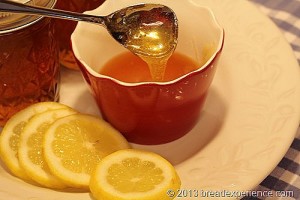
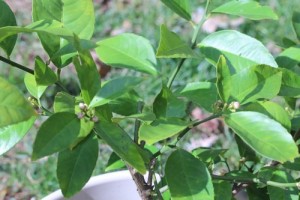
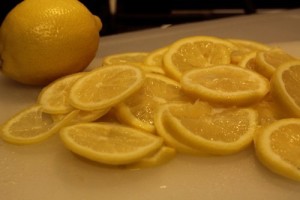
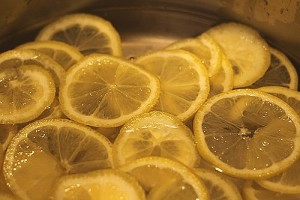
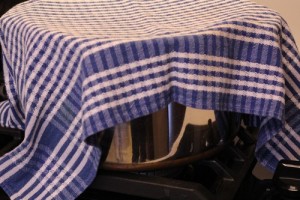
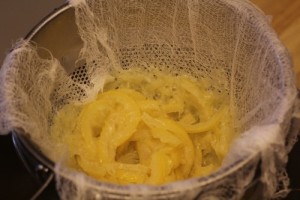
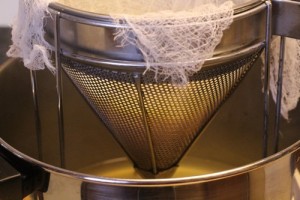
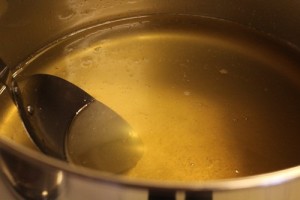
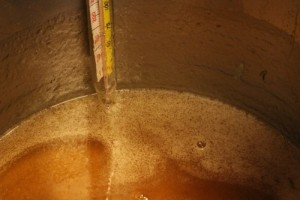
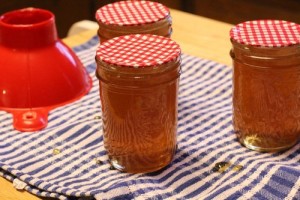
Leave a Reply